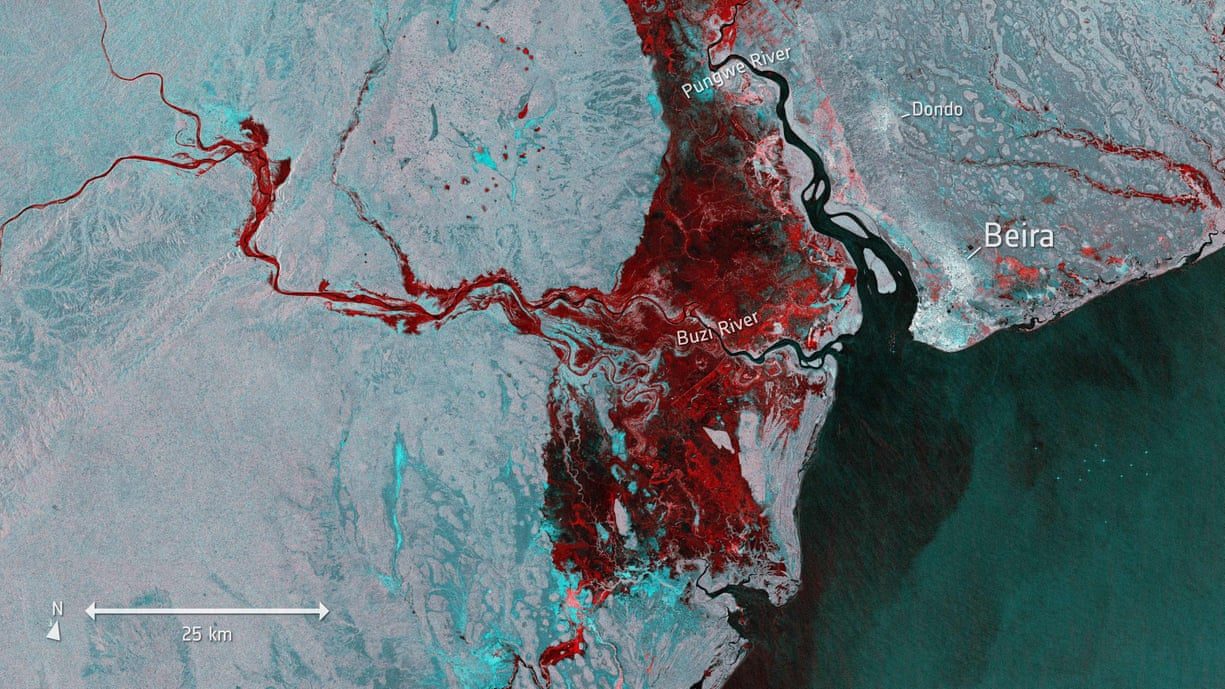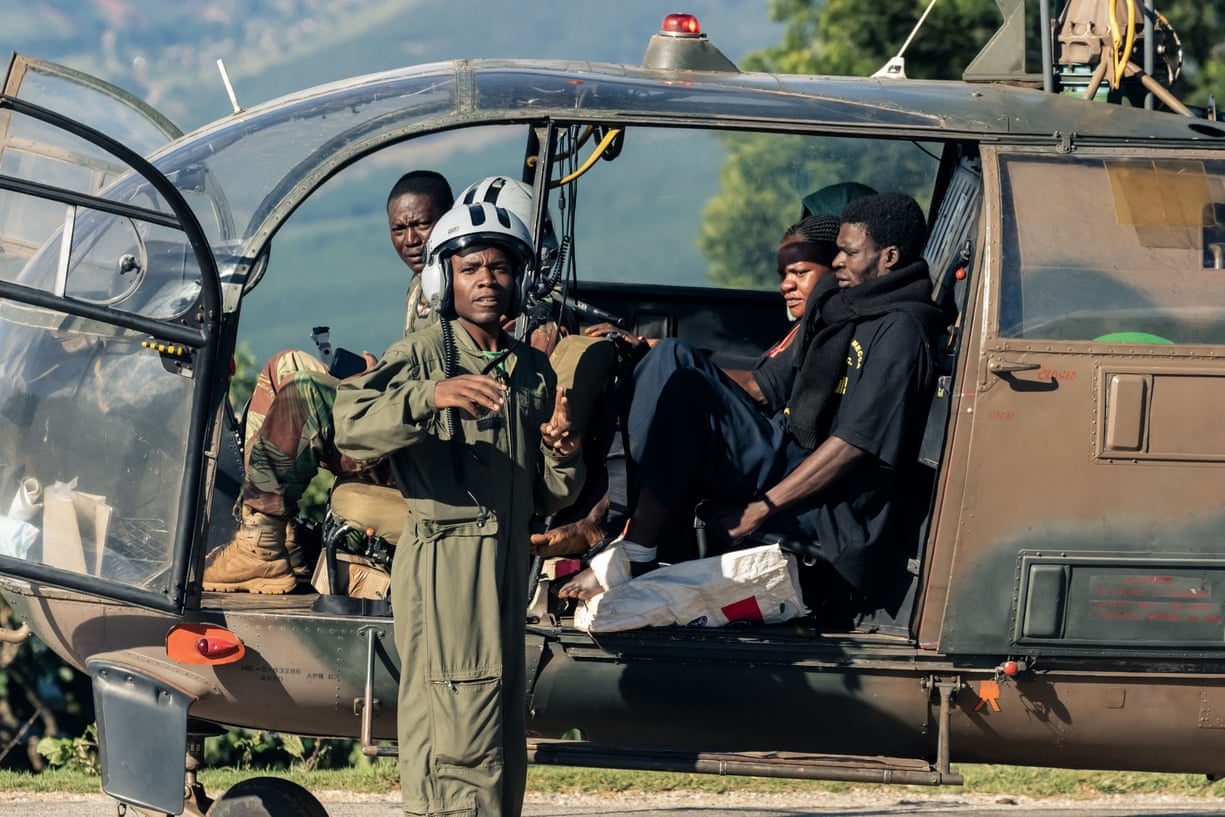
European Space Agency images show a huge new inland "lake" measuring about 80 miles by 15 miles (125km by 25km).
A large number of people in and around Beira who sought refuge on rooftops and trees are still waiting to be rescued a week after the cyclone struck. As flood waters recede, the priority is to deliver food and other supplies to people on the ground rather than take people out of affected areas, although that is also happening, Mozambique's land and environment minister said.
"Yesterday we had counted 15,000 people that still need rescuing today - 15,000 people who are in bad shape," Celso Correia told reporters. "They are alive, we are communicating with them, delivering food, but we need to rescue them and take them out. Our biggest fight is against the clock."
Cyclone Idai lashed Beira with winds of up to 105mph (170km/h), before moving inland to Zimbabwe and Malawi, flattening buildings and threatening millions of lives.
An estimated 200,000 people in Chimanimani district in Zimbabwe are likely to need urgent food aid for the next three months, the World Food Programme said. "It looks like the situation in Chimanimani - the hardest hit district in Zimbabwe - is very bad. Some 90% of the district has been significantly damaged," a spokesman told a news conference in Geneva.

Gerald Bourke, the regional communications officer at the World Food Programme, said the affected area was one of the most densely populated in Mozambique and rescuers still did not know how many people remained trapped. People clinging to trees were trying to avoid snakes that also fled the flooding, he said.
Aerial images released by Mozambique's disaster relief agency, the INGC, showed survivors packed together on top of high buildings in Buzi district, which is the worst affected area.
Travis Trower, who runs Rescue South Africa, an NGO involved in the air rescue efforts, described the scene arriving by road from Vilanculos to Buzi shortly after the cyclone struck.
"I have never seen water rise so fast," he said. "We were about 80km from Vilanculos where we came across this village. Everyone was in the trees and the women were throwing their babies to us. When we went back the next day, only the treetops were visible. The whole village had gone.
"There is huge urgency now to get to people. Given the size of the lake we are seeing on the satellite images we need to ask where are the people who live there."
Beira, now a large island in the flooded plains, remains a scene of widespread damage, with large numbers of fallen trees and power lines, shattered windows and little electricity.
More than 150 sq miles in the region are flooded and in some places the water is six metres (19ft) deep. At least 600,000 people have been affected, according to the UN Office for the Coordination of Humanitarian Affairs, ranging from those whose lives are in immediate danger to those who need other kinds of aid.
About 37 basic reception centres, mainly schools that can hold between 100 and 1,000 people, have been set up around Beira. The Guardian understands UN agencies are considering building two reception camps to accommodate 400,000 people, which would make providing food and health services easier.
"There's a need for almost everything," said Caroline Haga, an emergency communications specialist with the International Federation of Red Cross and Red Crescent Societies, in Beira.



Comment: Other recent massive flooding events elsewhere in the world: Australian river swells to 37 miles wide due to flooding, creates its own weather system
Over 10 million impacted by fatal and historic US flooding
Atacama desert, world's driest place suffers massive flooding in northern Chile